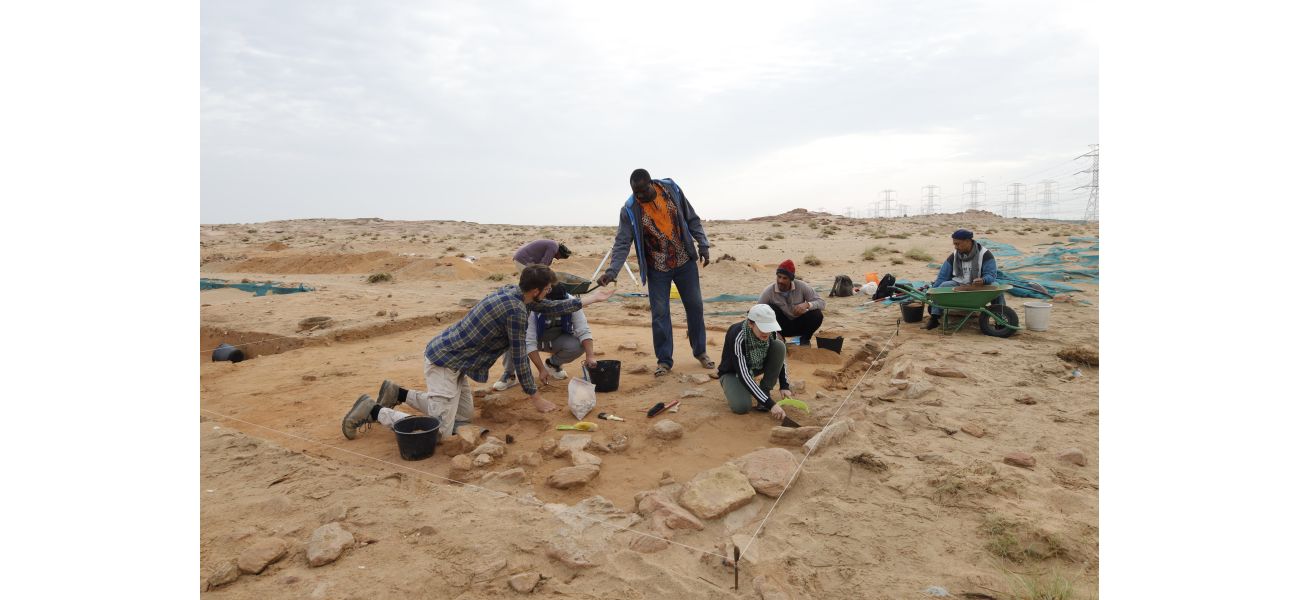Ancient site yields 7,000-year-old 'Alien' head figurine.
They look very similar to an alien.
December 19th 2024.

A group of archaeologists were recently on a dig in Kuwait when they stumbled upon a collection of intriguing relics. These objects, which include statues and masks, have features that bear a striking resemblance to what we would consider "aliens." With their elongated heads, flat noses, and large eyes, these ancient artifacts could easily be mistaken for something out of a science fiction movie.
The joint excavation was a collaboration between the National Council of Arts and Letters in Kuwait and the Polish Centre of Mediterranean Archaeology at the University of Warsaw. Their focus was the Bahra 1 site, an important location for studying life in Stone Age Arabia. This recent discovery sheds new light on the Ubaid culture, which existed from 5500-4000 B.C.
Interestingly, this is not the first time that ancient artifacts have led us to believe in the existence of extraterrestrial life. Just earlier this year, a series of monoliths appeared in the United States, fueling speculation and wonder.
The team's findings have been groundbreaking, providing insight into the scale and size of pottery production in the region during this time period. This pottery, which was found at the Bahra 1 site, is similar to that found in Mesopotamia but has never been seen in the Gulf Region before.
One of the most fascinating objects found at the site is a mask that could potentially be over 7,000 years old. It is a truly remarkable discovery and has raised many questions about its purpose and significance to the ancient community.
According to archaeologist Piotr Bieliński, one of the directors of Bahra 1, the presence of this mask is intriguing and could have held symbolic or ritualistic value for the people who lived in this community.
Further analysis by Professor Anna Smogorzewska has confirmed that Bahra 1 is the oldest pottery production site in the Gulf, providing even more insight into the region's past. The team also used archaeobotanical analyses to study organic remains found in a new type of clay called "Coarse Red Ware." Through these tests, they were able to identify traces of wild plants, such as reed, as well as cultivated plants like barley and wheat.
The team is eager to continue their work and hopes to uncover even more objects that will shed additional light on the Ubaid culture. With their 2024 season now concluded, the archaeologists at Bahra 1 are excited about the potential for future discoveries and the opportunity to learn more about this fascinating period in history.
The joint excavation was a collaboration between the National Council of Arts and Letters in Kuwait and the Polish Centre of Mediterranean Archaeology at the University of Warsaw. Their focus was the Bahra 1 site, an important location for studying life in Stone Age Arabia. This recent discovery sheds new light on the Ubaid culture, which existed from 5500-4000 B.C.
Interestingly, this is not the first time that ancient artifacts have led us to believe in the existence of extraterrestrial life. Just earlier this year, a series of monoliths appeared in the United States, fueling speculation and wonder.
The team's findings have been groundbreaking, providing insight into the scale and size of pottery production in the region during this time period. This pottery, which was found at the Bahra 1 site, is similar to that found in Mesopotamia but has never been seen in the Gulf Region before.
One of the most fascinating objects found at the site is a mask that could potentially be over 7,000 years old. It is a truly remarkable discovery and has raised many questions about its purpose and significance to the ancient community.
According to archaeologist Piotr Bieliński, one of the directors of Bahra 1, the presence of this mask is intriguing and could have held symbolic or ritualistic value for the people who lived in this community.
Further analysis by Professor Anna Smogorzewska has confirmed that Bahra 1 is the oldest pottery production site in the Gulf, providing even more insight into the region's past. The team also used archaeobotanical analyses to study organic remains found in a new type of clay called "Coarse Red Ware." Through these tests, they were able to identify traces of wild plants, such as reed, as well as cultivated plants like barley and wheat.
The team is eager to continue their work and hopes to uncover even more objects that will shed additional light on the Ubaid culture. With their 2024 season now concluded, the archaeologists at Bahra 1 are excited about the potential for future discoveries and the opportunity to learn more about this fascinating period in history.
[This article has been trending online recently and has been generated with AI. Your feed is customized.]
[Generative AI is experimental.]
0
0
Submit Comment




